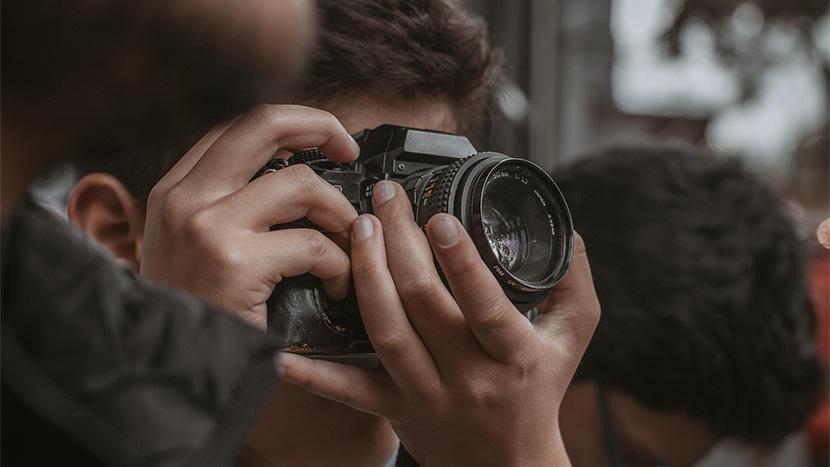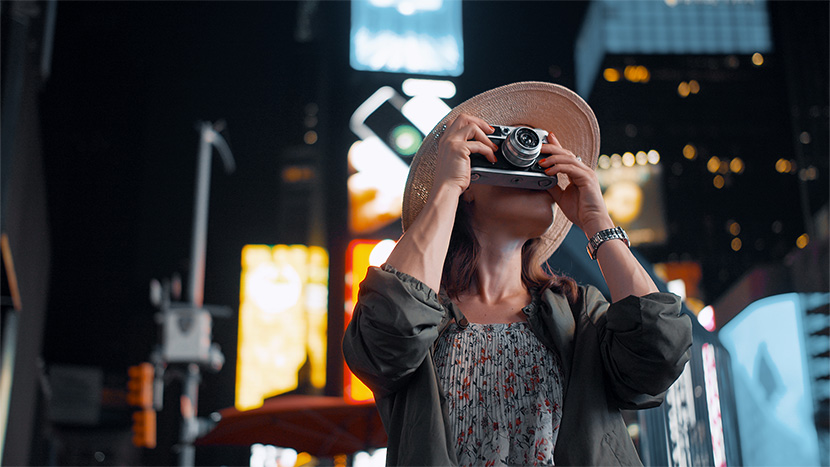Lens of Intuition: Exploring Photography Slant and Its Artistic Power
Welcome to the captivating world of photography, where your intuition becomes your most potent tool for creating mesmerizing images. In this article, we’ll delve into the concept of photography slant and how it can unleash the artistic power of your photographs.
The Art of Photography Slant
Photography is more than just capturing images; it’s about telling stories and evoking emotions. Photography slant, also known as the angle or perspective from which you shoot a subject, plays a pivotal role in how your audience interprets your photographs.
Your intuitive sense can guide you in choosing the perfect slant for your subject. When you’re behind the lens, trust your instincts to tell you how to approach your subject. Sometimes, crouching down to capture a child’s perspective or tilting your camera to emphasize the vastness of the sky can result in striking and emotionally charged images.
Photography slant is all about perspective, and your intuition can help you find the most compelling angles. Experiment with unconventional viewpoints and trust your gut feeling when framing your shots. Your intuition can lead you to discover unique compositions and perspectives that transform ordinary scenes into extraordinary photographs.
Conveying Emotion Through Photography Slant
One of the most powerful aspects of photography is its ability to convey emotions. Photography slant plays a crucial role in this process. You can infuse your photographs with emotion and resonance by tapping into your intuition.
Consider how the slant of your camera can influence the emotional impact of your photograph. Shooting from a low angle can make your subject appear more imposing and powerful, while a high angle can create vulnerability and evoke empathy. Trust your intuitive sense to guide you in choosing the slant that best conveys the emotions you want to capture.
Furthermore, use a photography slant to draw your viewers into the narrative of your photograph. Your intuition can help you frame your shots in a way that leads the eye, emphasizes focal points, and tells a visual story. When you look through the viewfinder, listen to your inner artist to guide you in composing images that resonate with your audience deeply emotionally.
Unleashing Your Intuitive Potential
To harness the artistic power of photography slant, you must unleash your intuitive potential. Start by honing your observation skills and paying attention to your surroundings. Notice how different angles and perspectives can transform the same subject. Look for patterns, shadows, and shapes that catch your eye and spark your intuition.
Practice mindfulness when you’re behind the camera. Take a moment to connect with your subject deeper and let your intuition guide you in choosing the right slant. Trust your instincts, even if they lead you away from conventional techniques. Remember that intuition is a powerful tool that can unlock your creative potential and result in photographs that leave a lasting impact.
The Essence of Candid Moments: Authenticity in Photography
In photography, capturing candid moments is like preserving the soul of a moment in time. The authenticity that emanates from candid shots has an unparalleled power to evoke emotions and tell stories. Let’s explore the essence of candid photography and how it can transform your photographic journey.
Candid photography is about capturing unposed and spontaneous moments. It’s about freezing a genuine expression, emotion, or interaction without the subject being aware of the camera. The magic lies in the unfiltered, unscripted nature of these shots. Candid photographs can transport viewers into the heart of the moment, making them feel like silent observers of a story unfolding before their eyes.
To excel in candid photography, you must become a master observer. Your intuition plays a significant role in this. As you develop your ability to tune into the energy and emotions of a scene, you’ll intuitively recognize those fleeting moments that are worth capturing. Trust your instincts in recognizing when to click the shutter, even if it means deviating from traditional composition rules.
The beauty of candid shots is their ability to reveal the raw and genuine emotions of your subjects. Whether it’s a spontaneous burst of laughter, a contemplative gaze, or a shared glance between loved ones, candid moments capture the authenticity of human experiences. Your intuition can help you anticipate these moments and be ready to seize them when they occur.
The Dance of Light and Shadow: Mastering Photography Contrast
Photography is often described as painting with light, and the interplay of light and shadow, known as contrast, is at the heart of this art form. Understanding and mastering contrast in photography can elevate your images to new heights, creating a visual feast for your viewers.
Contrast is about the difference between your photograph’s brightest and darkest parts. It can be subtle or dramatic, depending on your creative intentions. Your intuition plays a vital role in deciding how to use contrast effectively in your photography.
To master contrast, start by honing your intuitive sense of light. Observe how light falls on your subjects and the environment. Notice the interplay of highlights and shadows and how they shape the scene. Trust your intuition to guide you in finding the right balance of light and shadow to convey your desired mood and atmosphere.
Furthermore, contrast can be used to draw the viewer’s attention to specific elements within your photograph. Your intuition can help you identify these focal points intuitively. Trust your gut feeling when deciding what should be highlighted and recede into the shadows.
Experiment with different types of contrast, such as tonal contrast (variations in lightness and darkness), color contrast (complementary or contrasting colors), and textural contrast (contrasting textures). Your intuition can lead you to discover unique and visually striking compositions that rely on the power of contrast to make a statement.
The Magic of the Golden Hour: Mastering Natural Light in Photography
Natural light is a photographer’s best friend, and the golden hour, that magical time shortly after sunrise or before sunset, is a gift from Mother Nature. Mastering the use of natural light, especially during the golden hour, can transform your photographs into stunning works of art. Let’s explore the magic of the golden hour and how your intuition can help you make the most of it.
The golden hour is characterized by soft, warm, and diffused light that bathes your subjects and scenes in a gentle glow. This quality of light is highly flattering and can add a touch of enchantment to your photographs. It’s a prime time for portrait photography, landscape shots, and capturing the beauty of your surroundings.
Your intuition plays a crucial role in harnessing the potential of the golden hour. Start by developing your intuitive sense of timing. Trust your instincts to recognize when the golden hour is approaching and when it reaches its peak. Being in the right place at the right time is often a matter of intuition and preparation.
When shooting during the golden hour, let your intuition guide you in choosing the right angles and perspectives. The warm, directional light creates beautiful highlights and shadows that can add depth and dimension to your images. Your intuition can help you identify the most photogenic elements within your frame and create compositions that make the most of this magical light.
Moreover, the golden hour invites you to experiment with creativity and emotion. The soft, warm tones evoke a sense of tranquility and nostalgia. Trust your intuition to guide you in conveying the mood and atmosphere that resonate with your vision for the photograph. Whether it’s a serene portrait or a breathtaking landscape, the golden hour is a canvas for your intuitive expression.
The golden hour is a time of unparalleled beauty in photography, and your intuition is your compass to navigate its enchanting light. By trusting your instincts, observing the interplay of light and shadow, and capturing candid moments, you can create photographs that captivate, inspire, and evoke emotions.
So, as you embark on your photographic journey, remember to embrace the magic of intuition and let it guide you to create images that tell stories, evoke emotions, and leave a lasting impact on your viewers.
Conclusion: Your Intuitive Lens
Photography slant is more than just a technical aspect of photography; it’s a gateway to artistic expression and emotional storytelling. Your intuition is the key to unlocking the full potential of this creative tool.
So, trust your intuitive lens when you pick up your camera. Look into it more, and you’ll discover that your intuition can guide you in creating photographs that resonate, inspire, and capture the moment’s essence.


































































































